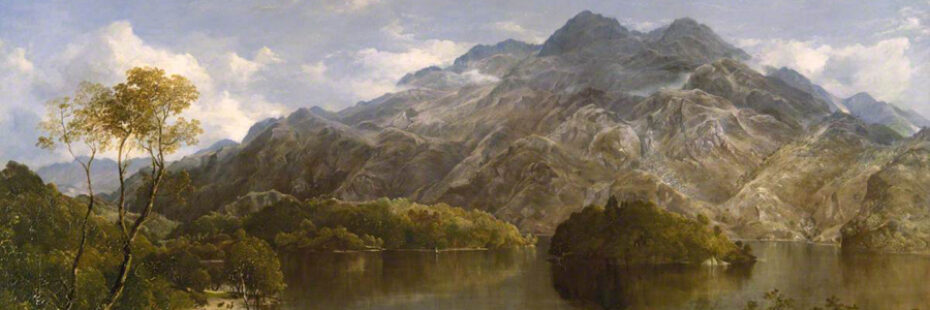
The Great Trossachs Art & Literature Trail
One of the jewels of Loch Lomond and The Trossachs National Park, Loch Katrine and the surrounding Trossachs have attracted and inspired artists, writers and musicians for hundreds of years. By following this unique Art and Literature Trail you can follow in their footsteps and discover why this area is embedded in the hearts and minds of so many.
In 1803 three great English writers explored the Trossachs. They were William Wordsworth, his sister Dorothy and fellow poet Samuel Coleridge. They were captivated by the area’s landscape and aura of romance. Their subsequent writings inspired countless visitors to follow in their footsteps.
One of their ‘footstep-followers’ was Sir Walter Scott – he had met the Wordsworths in the Scottish Borders after their Trossachs visit. He visited the Trossachs several times and then set his bestselling Lady of the Lake in and around Loch Katrine. Published in 1810, the epic poem brought the history and majesty of the Trossachs into readers’ homes (25,000 copies were sold in 6 months – huge numbers at that time). Within 10 years it had been translated into 20 languages, theatre plays, musicals and operas. Scott’s highly dramatic prose brought to life the beauty of the Trossachs. It arguably changed forever how people looked at and enjoyed landscape.

Loch Katrine (detail), Horatio McCulloch (credit: Perth & Kinross Council)
The floodgates opened. More and more visitors came. Professional and amateur artists carted sketch books along the edge of the loch and even Queen Victoria joined the Lady of the Lake ‘fan club’. In 1817 Scott went on to publish his adventure-novel Rob Roy. It romanticized the bandit-hero and further reinforced the appeal of the Trossachs. Other literary tourists who followed included such famous names as Thomas Carlyle, Hans Christian Anderson, Gerard Manley Hopkins, Alexander Smith and Jules Verne, whose book, The Underground City, is set beneath Loch Katrine.
In the summer of 1853, the Trossachs ‘magnet’ attracted the writer, naturalist and philosopher John Ruskin. He was accompanied by his wife, and the artist John Millais. Millais painted his famous portrait of Ruskin at Brig O’Turk. More painters came. Horatio McCulloch created one of Scotland’s best known landscapes here, Loch Katrine. Its dramatic style reinforced the romantic imagery of the Trossachs. Other visiting great painters included Turner, Nasmyth, Knox and Bough. Wiliam Fox Talbot (known as the inventor of photography) published a hugely popular, pioneering book of photographs that were taken here.
And musicians were equally inspired – a young Schubert wrote one of his best known pieces, Ave Maria, to the words of Lady of the Lake. Rossini’s opera La Donna del Lago was similarly based on the Rob Roy and Lady of the Lake stories.
The Doon Hill mystery
The Reverend Robert Kirk was a minister in Aberfoyle. In 1691 he published his famous book The Secret Commonwealth of Elves and Fairies. It was subtitled ‘an essay of the nature and actions of the subterranean (and for the most part) invisible people heretofore going under the names Elves, Fauns and Fairies’. Not long after that he mysteriously disappeared.
In spite of his religion, like most people in the 17th century he believed in witchcraft, spirits and pagan rituals. In fact he was so obsessed by the study of fairies (known as Urisks) that he described their appearance, ways, habits and secrets in his book. That was probably his big mistake. Local people believe that by revealing their closely guarded secrets, he annoyed the spirit people and they killed him! The ‘murder’ took place on Aberfoyle’s Doon Hill, which is a strange, knoll-like mound. The Reverend’s body was found there on 14 May 1692, dressed only in a nightgown.
You can walk up to the top of Doon Hill from the town. Look for an ancient pine in the middle of a clearing. It’s thought to be a doorway to an underground Fairy Queen’s palace, where Robert Kirk’s soul is still held captive.

